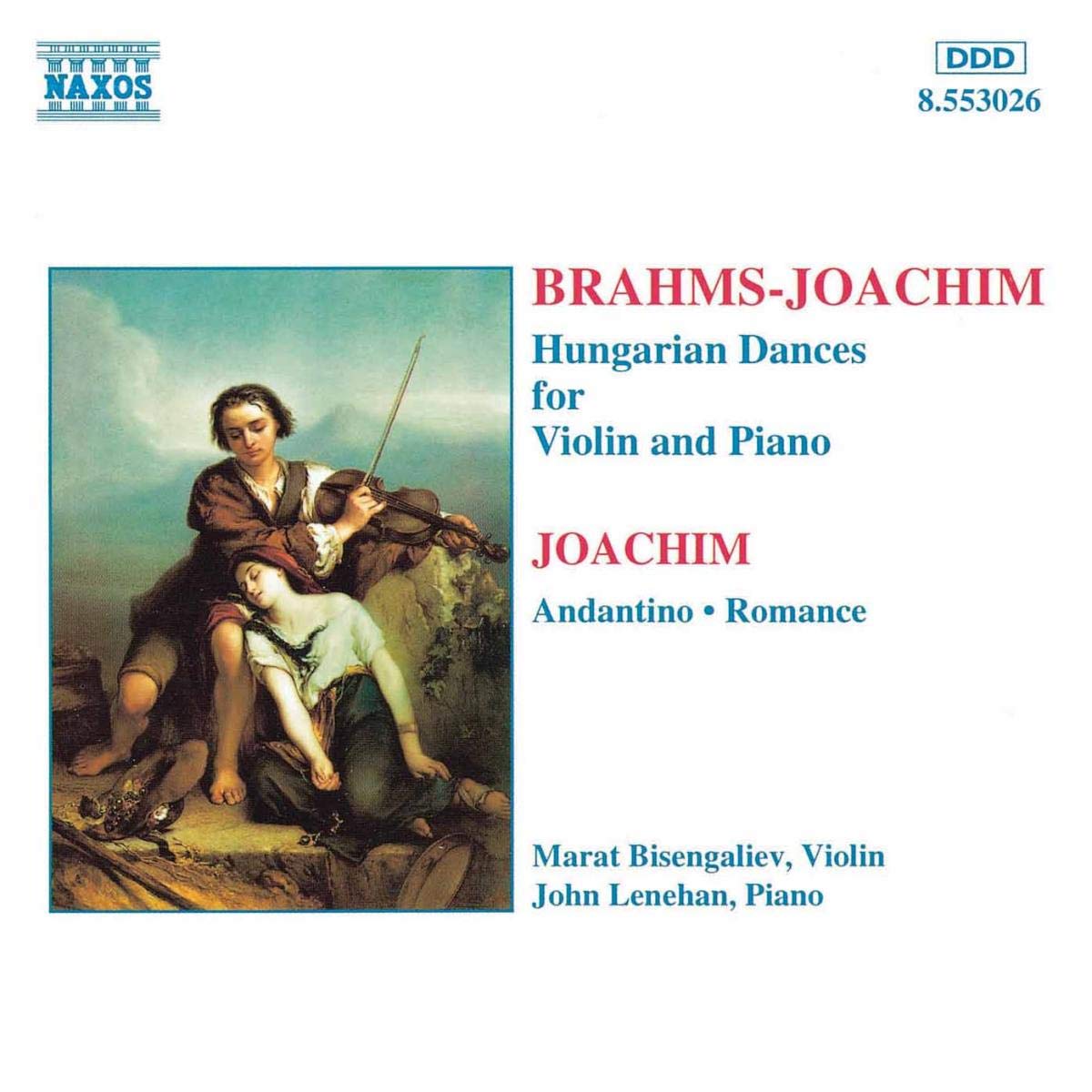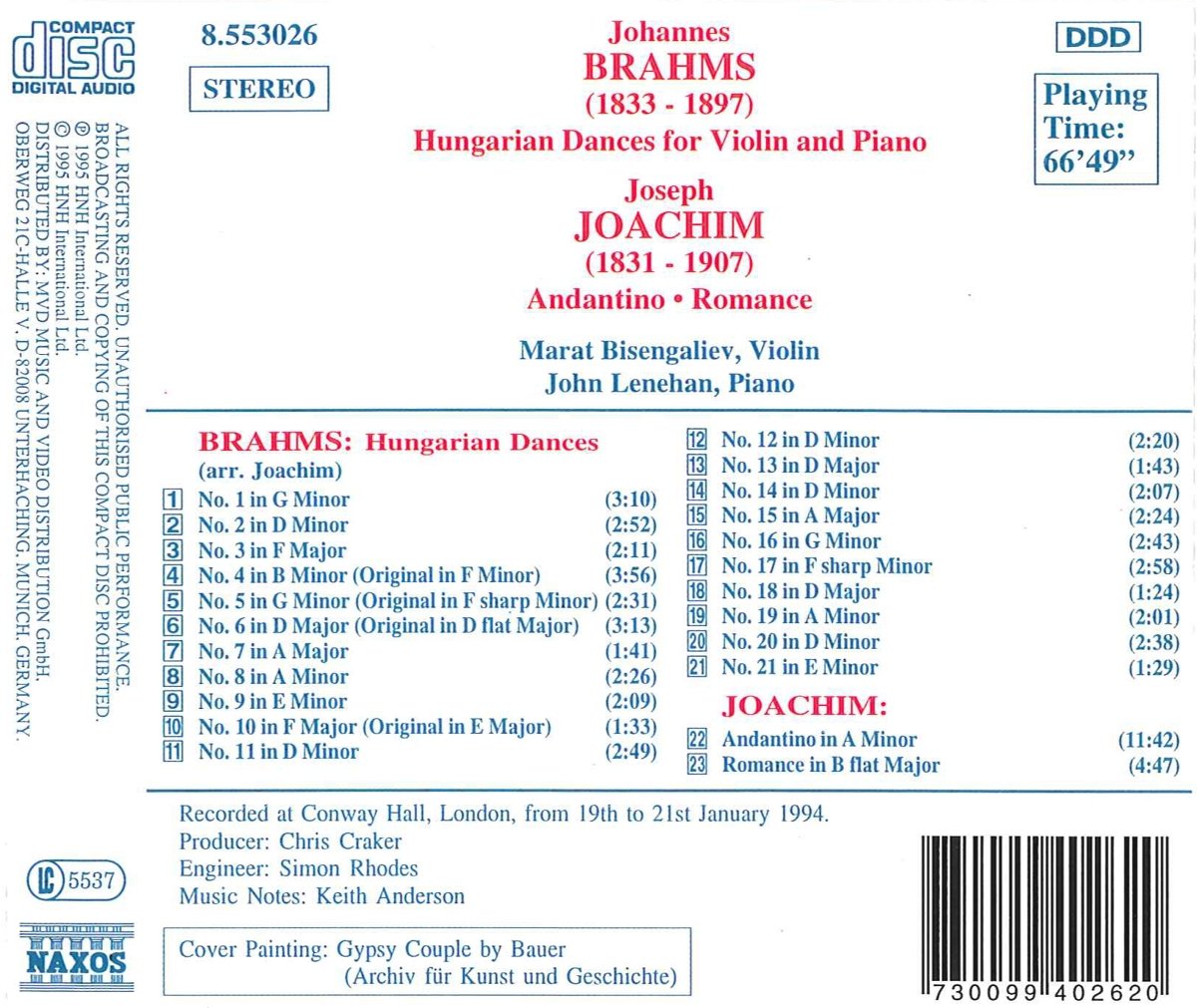
classical music distribution


(Produkt nie został jeszcze oceniony)
kompozytor
Brahms, Johannes;
Joachim, Joseph
tytuł
Joachim/Brahms: Hungarian Dances
wykonawcy
Lenehan, John;
Bisengaliev, Marat
Bisengaliev, Marat
nr katalogowy
8.553026
opis
Joachim's relationship with Brahms was important. The latter was able to call on Joachim for advice in orchestration and in writing for strings, and was undoubtedly influenced by the quartet that Joachim established in Hanover and by the very distinguished Joachim Quartet, established first in 1869. Brahms and Joachim were united in their opposition to the Neo-German school of Liszt and Wagner and their friendship was only broken when Brahms, with habitual indiscretion, wrote a letter of support to Joachim's wife, the singer Amalie Weiss, when divorce was threatened. The letter was produced in court as evidence of Joachim's unreasonable behaviour, and the divorce was not granted. A measure of amity was restored when Brahms wrote for Joachim his Double Concerto, for violin and cello.
As a composer Joachim wrote relatively little. He left, however, a series of useful cadenzas to major classical concertos, violin studies and editions and a number of works for violin and orchestra and violin or viola and piano. His arrangement of Brahms's popular Hungarian Dances returns to suitably idiomatic musical form the 21 dances that Brahms had written between 1852 and 1869 for piano duet. These were published in that form in 1869 and in 1880, with an arrangement of the first two books for one player appearing in 1872.
The dances capture something of the spirit of supposed Hungarian gypsy music. Included in the present recording are two pieces by Joachim for violin and piano, an Andantino and a Romance, the first a more substantial work, arranged by Joachim from his own composition for violin and orchestra.
As a composer Joachim wrote relatively little. He left, however, a series of useful cadenzas to major classical concertos, violin studies and editions and a number of works for violin and orchestra and violin or viola and piano. His arrangement of Brahms's popular Hungarian Dances returns to suitably idiomatic musical form the 21 dances that Brahms had written between 1852 and 1869 for piano duet. These were published in that form in 1869 and in 1880, with an arrangement of the first two books for one player appearing in 1872.
The dances capture something of the spirit of supposed Hungarian gypsy music. Included in the present recording are two pieces by Joachim for violin and piano, an Andantino and a Romance, the first a more substantial work, arranged by Joachim from his own composition for violin and orchestra.
nośnik
CD
gatunek
Muzyka klasyczna
producent
Naxos
data wydania
12-09-1995
EAN / kod kreskowy
730099402620

(Produkt nie został jeszcze oceniony)
cena 58,00 zł
lubProdukt na zamówienie
Wysyłka ustalana indywidualnie.
Darmowa wysyłka dla zamówień powyżej 300 zł!
Darmowy kurier dla zamówień powyżej 500 zł!
sprawdź koszty wysyłkiProduktu jeszcze nie zrecenzowano, chcesz być pierwszy?
Klienci, którzy kupili ten produkt, kupili również
Pozostałe płyty tego kompozytora
Mussorgsky, Modest, Brahms, Johannes, Schumann, Robert
SCHUMANN: Kinderszenen / MUSORGSKY: Pictures at an Exhibition (Moiseiwitsch, Vol. 1) (1927-1945)
8.110668
Brahms, Johannes, Tchaikovsky, Piotr
Brahms: Piano Cto No. 2 / Tchaikovsky: Piano Cto No. 1
8.111271
Beethoven, Ludwig van, Brahms, Johannes
BRAHMS: Double Concerto; Violin Sonata No. 3; BEETHOVEN: Violin Sonata No. 5
8.111051
różni kompozytorzy
Great Chamber Music - Haydn, Mozart, Beethoven, Schubert, Mendelssohn, ...
8.501064
Brahms, Johannes, Tchaikovsky, Piotr, Liszt, Franz
Brahms: Double Concerto; Tchaikovsky: Romeo & Juliet; Liszt: Les Preludes
757204
Pozostałe płyty tego wykonawcy
Delius, Frederick, Ireland, John
Delius & Ireland: Evening Songs, arranged for cello and piano by Julian Lloyd Webber
8.572902
różni kompozytorzy
LALO: Symphonie Espagnole / SARASATE: Zigeunerweisen / RAVEL: Tzigane
8.550494
Bernstein, Leonard, Copland, Aaron, Dankworth, John
COPLAND / BERNSTEIN / DANKWORTH: Music for Clarinet and Piano
8.572240
Napisz recenzję dla: Joachim/Brahms: Hungarian Dances
Zapytaj o dostępność produktu
Twoje zapytanie:
Odpowiemy na adres:
Produkt został dodany do koszyka

Brahms, Johannes, Joachim, Joseph
Joachim/Brahms: Hungarian Dances
1 szt












































